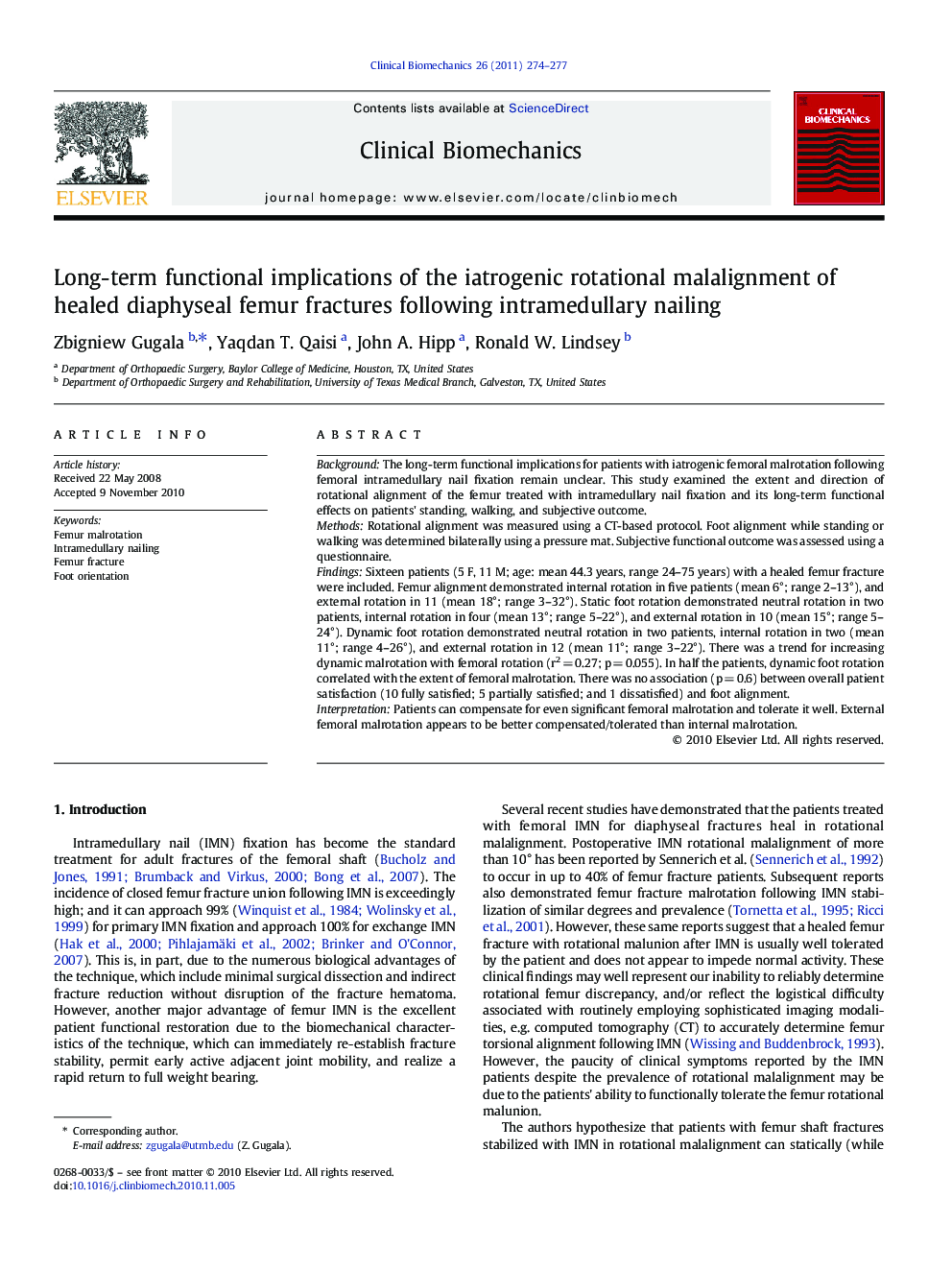| Article ID | Journal | Published Year | Pages | File Type |
|---|---|---|---|---|
| 4050923 | Clinical Biomechanics | 2011 | 4 Pages |
BackgroundThe long-term functional implications for patients with iatrogenic femoral malrotation following femoral intramedullary nail fixation remain unclear. This study examined the extent and direction of rotational alignment of the femur treated with intramedullary nail fixation and its long-term functional effects on patients' standing, walking, and subjective outcome.MethodsRotational alignment was measured using a CT-based protocol. Foot alignment while standing or walking was determined bilaterally using a pressure mat. Subjective functional outcome was assessed using a questionnaire.FindingsSixteen patients (5 F, 11 M; age: mean 44.3 years, range 24–75 years) with a healed femur fracture were included. Femur alignment demonstrated internal rotation in five patients (mean 6°; range 2–13°), and external rotation in 11 (mean 18°; range 3–32°). Static foot rotation demonstrated neutral rotation in two patients, internal rotation in four (mean 13°; range 5–22°), and external rotation in 10 (mean 15°; range 5–24°). Dynamic foot rotation demonstrated neutral rotation in two patients, internal rotation in two (mean 11°; range 4–26°), and external rotation in 12 (mean 11°; range 3–22°). There was a trend for increasing dynamic malrotation with femoral rotation (r2 = 0.27; p = 0.055). In half the patients, dynamic foot rotation correlated with the extent of femoral malrotation. There was no association (p = 0.6) between overall patient satisfaction (10 fully satisfied; 5 partially satisfied; and 1 dissatisfied) and foot alignment.InterpretationPatients can compensate for even significant femoral malrotation and tolerate it well. External femoral malrotation appears to be better compensated/tolerated than internal malrotation.
